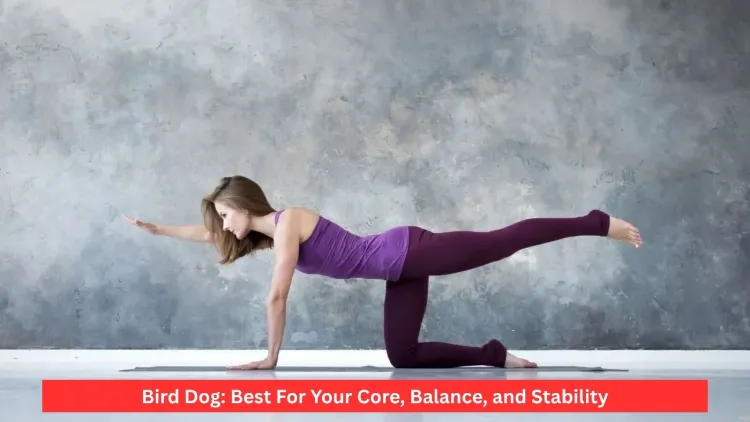Bird dog is a low-impact, easy, and efficient type of exercise, which builds your core, improves balance, and elevates the stability of your spine. It trains various body muscles (such as your back, glutes, and abs) and helps to avoid lower back pain and better posture. It suits all levels of beginners, advanced athletes, can be done anywhere, and no equipment is needed, and it keeps the fitness, flexibility and endurance of the body active.
- What Is the Bird Dog Exercise?
- Muscles Used during the Bird Dog
- The Bird Dog Exercise should be done in this way
- Common Mistakes to Avoid
- Advantages of Bird Dog Exercise
- Bird Dog vs Other Core Exercises
- What is the frequency of the Bird Dog?
- Importance of Bird Dog in Full-Body Training
- How to make the Core and Spine stronger in a safe way
- Tips for Best Results
- Final Thoughts
- Frequently Asked Questions
What Is the Bird Dog Exercise?
Bird dog is a vigorous bodyweight workout that is targeted at progressing a sense of coordination, steadiness and the general command of the body. It is done on all fours, but with one arm and the other leg protruding at the same time, like an insinuating hunting dog. The exercise is common in yoga programs, physical therapy, and strength training programs to engage the core as well as the strengtheners of the spine in a safe manner.
This is because the bird dog does not undue stress in the spine as it builds up deep abdominal and back muscles. The bird dog is mild, but equally effective as compared to other core movements such as planks or sit-ups; hence, it is favourable among lower back problems or people with limited mobility. Some trainers also believe it to be superior to the plank when a person wants to develop endurance and alignment, as opposed to just pure core tension.
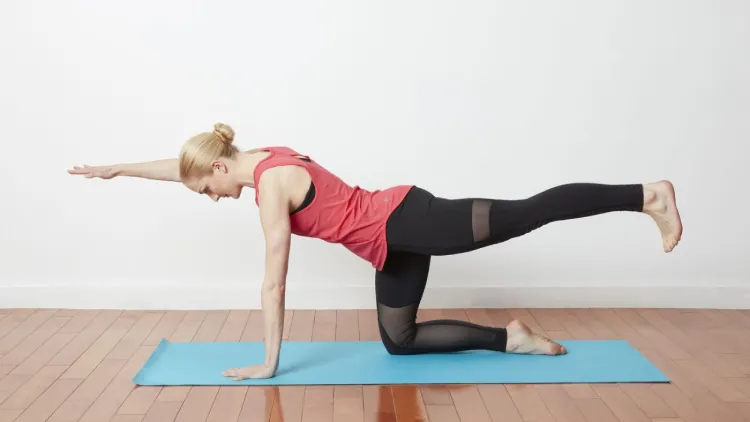
Muscles Used during the Bird Dog
The bird dog uses a large number of muscles, which develop overall body muscle and coordination.
It primarily targets:
- Core muscles: The obliques help to provide balance by stabilising the trunk with the help of the transverse abdominis.
- Erector spinae: These are muscles that run along the spine that will assist in enhancing posture and avoiding pain in the back.
- Glutes and hamstrings: They extend and stabilise the hips.
- Shoulders and upper back: Be balanced with the arms extended properly.
These efforts by the bird dog reinforce the interior core, develop stability around the spine, and may, with time, even carve recognisable abs. Bird dogs, when done regularly and in combination with proper nutrition, could help in addition to the stronger and define the abdominal muscles.
The Bird Dog Exercise should be done in this way
The working technique of the bird dog guarantees the greatest benefit and minimal chances of obtaining injuries.
Here’s how to do it step-by-step:
- Start in a tabletop position: You should start on your hands and knees, having the wrists beneath the shoulders and the knees beneath the hips. Maintain a neutral position of the back and stare at the floor.
- Engage your core: Cinch your stomach muscles so as to level the torso.
- Extend opposite limbs: Bend your right arm forward and your left leg backwards till they are parallel to the ground. Hips should be kept straight and no rotation.
- Hold the position: Hold the position for about 5 to 10 seconds, inhaling steadily. This period of time enhances your stamina and authority.
- Return and switch: Ease your limbs slowly down, then do the same with the other arm and leg.
To experience the bird dog exercise in the appropriate muscles, work on the squeeze of the glutes, the tightening of the core, and maintaining the straight posture of the spine. When it is done properly, it will hit you, not your limbs, but in your abs and lower back.
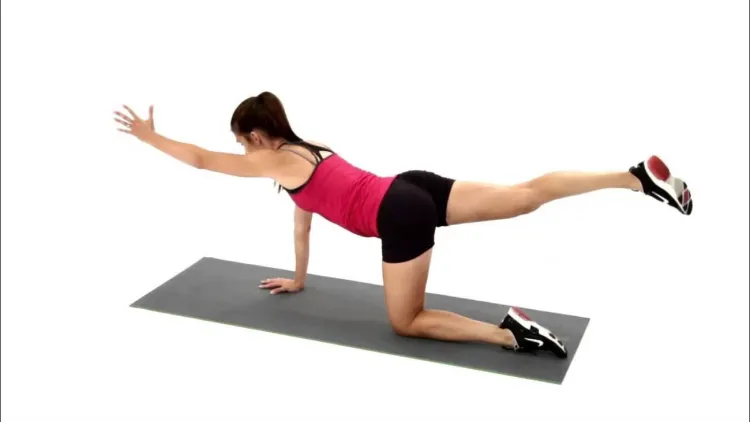
Common Mistakes to Avoid
Though the bird dog is not complicated, small shape mistakes may decrease its performance or cause the dog to become uncomfortable.
Avoid these common mistakes:
- Arch or Sagging your back: We should have the back of our neurobiological spine in a neutral position to prevent back pain in the lower back region.
- Making the limbs go too high: Do not elevate above the shoulders or hips, but only to the level of them.
- Going too fast: The bird dog is of slow, deliberate movement.
- Failure to engage the core: This will result in loss of balance and shape unless your abs are tightened.
- Breath control: Breathe must always be steady – breathe out as you stretch and breathe in as you stretch.
When you experience aches in your back or shoulders rather than the core and glutes, reposition yourself. Adequate breathing and positioning are significant.
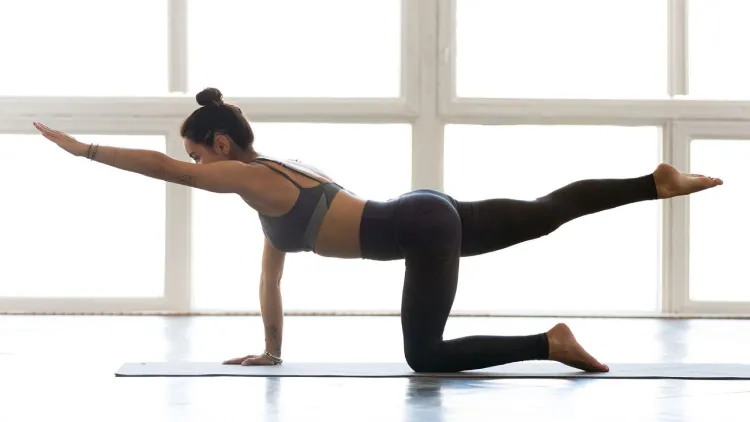
Advantages of Bird Dog Exercise
The bird dog is useful in many aspects regarding physical and functional advantages.
1. Develops Back Strength and Stability
Bird dog activates your deep core muscles, such as transverse abdominis, which work to stabilise your spine as well as your pelvis. Enhancing this aspect can minimise the chances of injury, boost the sense of balance, as well as increase performance in sports activities.
2. Enhances Posture and Back condition
This exercise is a great one since it involves the muscles working on supporting the spine, and hence most people who suffer stiffness as a result of sitting longer will find this exercise very good. It also works well when a person suffers from back pain because it develops the spine in a way that does not strain the joints.
3. Fat Loss and Functional Fitness
Although the bird dog is not a high-calorie burning activity, it aids in the process of fat loss by enhancing metabolism and the strength of functioning. Combined with such exercises as the planks, dead bugs, or Superman pose, it will have the effect of tightening the belly and burning the belly fat without exposing your back to danger.
4. Increases Equilibrium and Co-ordination
The bird dog enhances coordination of the left and right sides of the body; this improves motor skills because it demands control of both opposite limbs.
5. Trains Multiple Muscle Groups
Bird dog. This is a full-body stabilising exercise that assists in developing lean back, glute-abdominal/shoulder muscles. As time goes by, it builds muscle strength and stamina, making one have a more powerful and sporty appearance.
Bird Dog vs Other Core Exercises
The bird dog imposes less stress on the shoulders and lower back in comparison with the plank, nonetheless providing a very good core activation. It is more user-friendly and long-term usable for beginners. In the meantime, Superman is rather back and glute dominant, but the bird dog utilises both the anterior and posterior chains.
The bird dog should also be used as a component of an effective core and mobility workout in combination with other supportive yoga poses, such as dead bugs, donkey kicks, and downward-facing dog. The combination of these movements gives your spine, abs, and hips some strength and helps you improve your posture and flexibility.
What is the frequency of the Bird Dog?
To achieve the best, one should make 3 sets with 10- 15 reps on each side, at least 3-5 times per week. In case you want better stabilisation or to alleviate back pain, you can take the bird dog every day as it is a low-impact exercise. The duration of each hold is approximately 5-10 seconds or so, depending on the level of your strength.
Novices can also experience shorter holds and fewer reps, whereas more advanced users can introduce resistance bands or weights so that there are added challenges. Within 2-4 weeks, with regular practice, balance and posture improvement in the participants is evident.
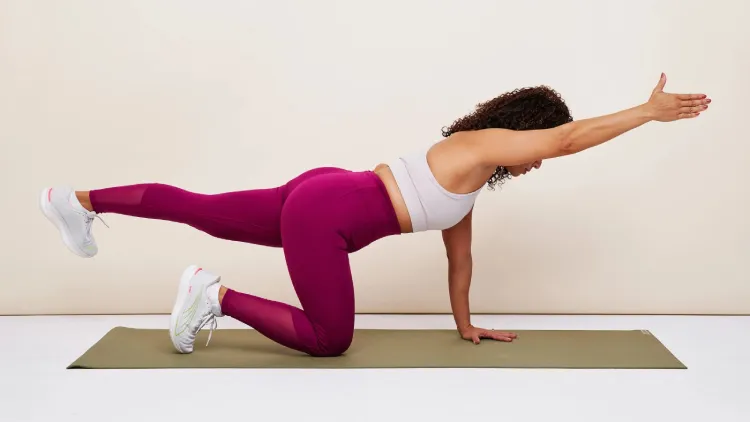
Importance of Bird Dog in Full-Body Training
The bird dog is a good warm-up or cool-down exercise for any workout. It can also be used together with some of the strength exercises, such as the squats and the deadlifts, or the flexibility exercises, such as the world’s greatest stretch, which stretches out the hips and the spine.
It uses all the major stabilising muscles of the core when performed in combination with dead bugs or glute bridges. These exercises are safe to perform daily because they do not strain your muscles but rather strengthen the functional motions.
How to make the Core and Spine stronger in a safe way
Exercises such as the bird dog are necessary for those who have lower back pain. They build up the inner core and help in supporting the spinal form. Besides training, nutrition is also involved; they are rich in calcium, magnesium, and omega-3 fatty acids, which keep the spinal strength up.
It is also important to improve your sleeping position; lying on your back or the side in a well-aligned posture of your spine may help relieve tension and pain occurring in the back in the morning. The usual causes of lower back pain are the weakness of core muscles, bad posture, excessive sitting, and improper lifting. Bird dog involves itself in correcting these problems.
Tips for Best Results
- Do the bird dog in a slow and conscious manner – control.
- Use your ab and butt muscles in the movement.
- Maintain the proper position of your head with your spine.
- Be consistent; that is how outcomes are achieved through practice.
- Put it with a balanced diet and water to facilitate muscle recovery.
- At some point, you will find that you have better postures, less back pain, and stronger abs. One may even go as far as to be sweating as a result of a high-rep bird dog session, which is a good indication that something is indeed working your muscles and stabilisers.

Final Thoughts
The bird dog exercise is not merely a core but a body exercise since it helps to enhance the stability of the body, the strength of the spine, and coordination. Its ideal use is with beginners, athletes, and when the body is backache-recovering. Doing it properly and regularly, it strengthens muscles, aids in burning fat, and also helps the body in the long-term spinal health.
Regardless of your goal of wanting to increase core strength, reduce back pain, or better posture, the bird dog is an inevitable addition to your workout. It needs no equipment and has little risk involved, and so it is one of the safest and most effective methods of maintaining a body which is strong, well-balanced and pain-free.
Frequently Asked Questions
1. Which muscles are strengthened by the bird dog?
It is aimed at the abs, glutes, shoulders, and lower back muscles, and it serves to stabilise and strengthen the spine.
2. So sometimes, how long should you do the bird dog pose?
Each extension should last 5-10 seconds to develop stability and endurance.
3. Does the bird dog make a better posture?
Yes, as it turns the l muscles and core muscles are strong, posture and balance are automatically enhanced.
4. Does the bird dog build muscle?
It, yes, develops lean muscle in the core, back and glutes.

